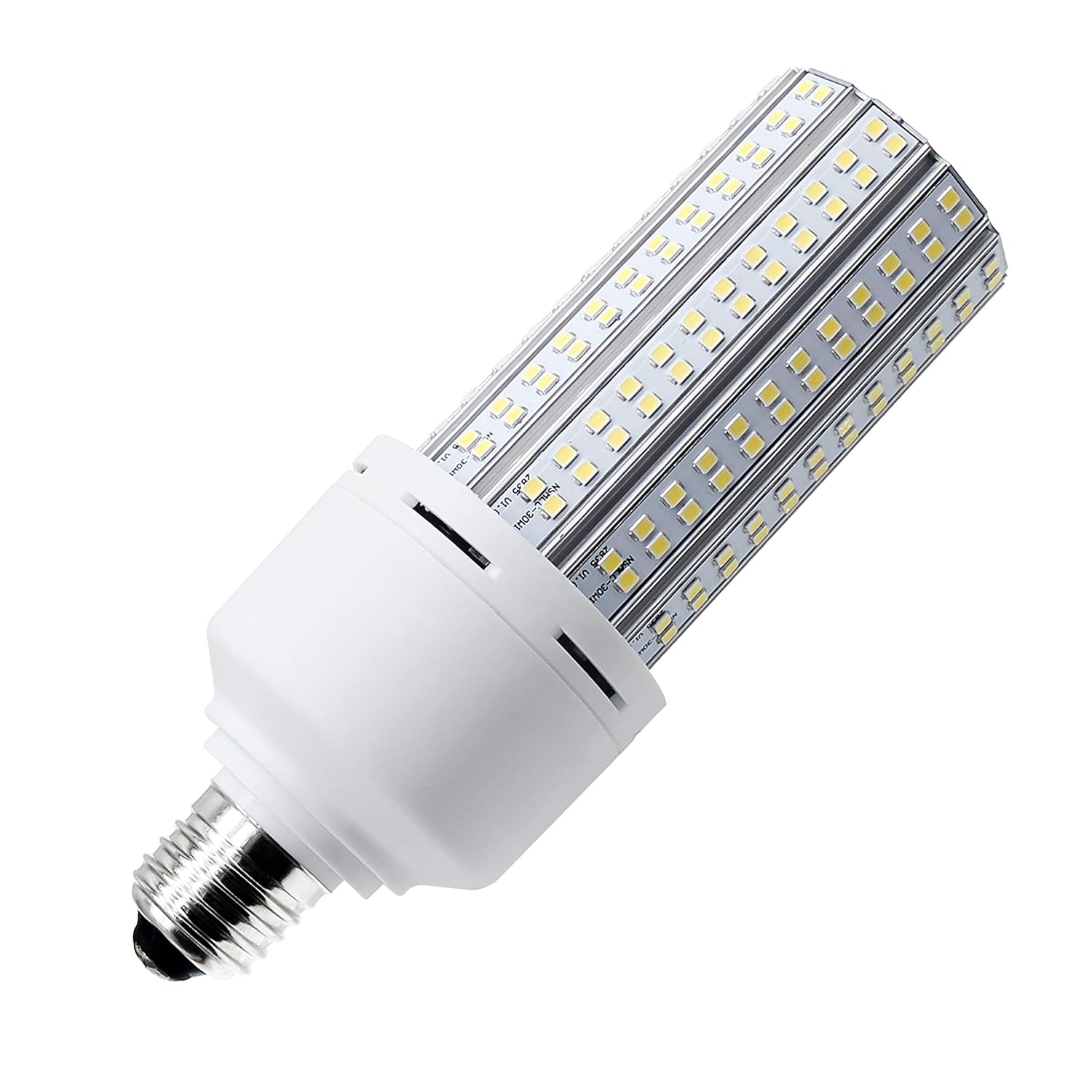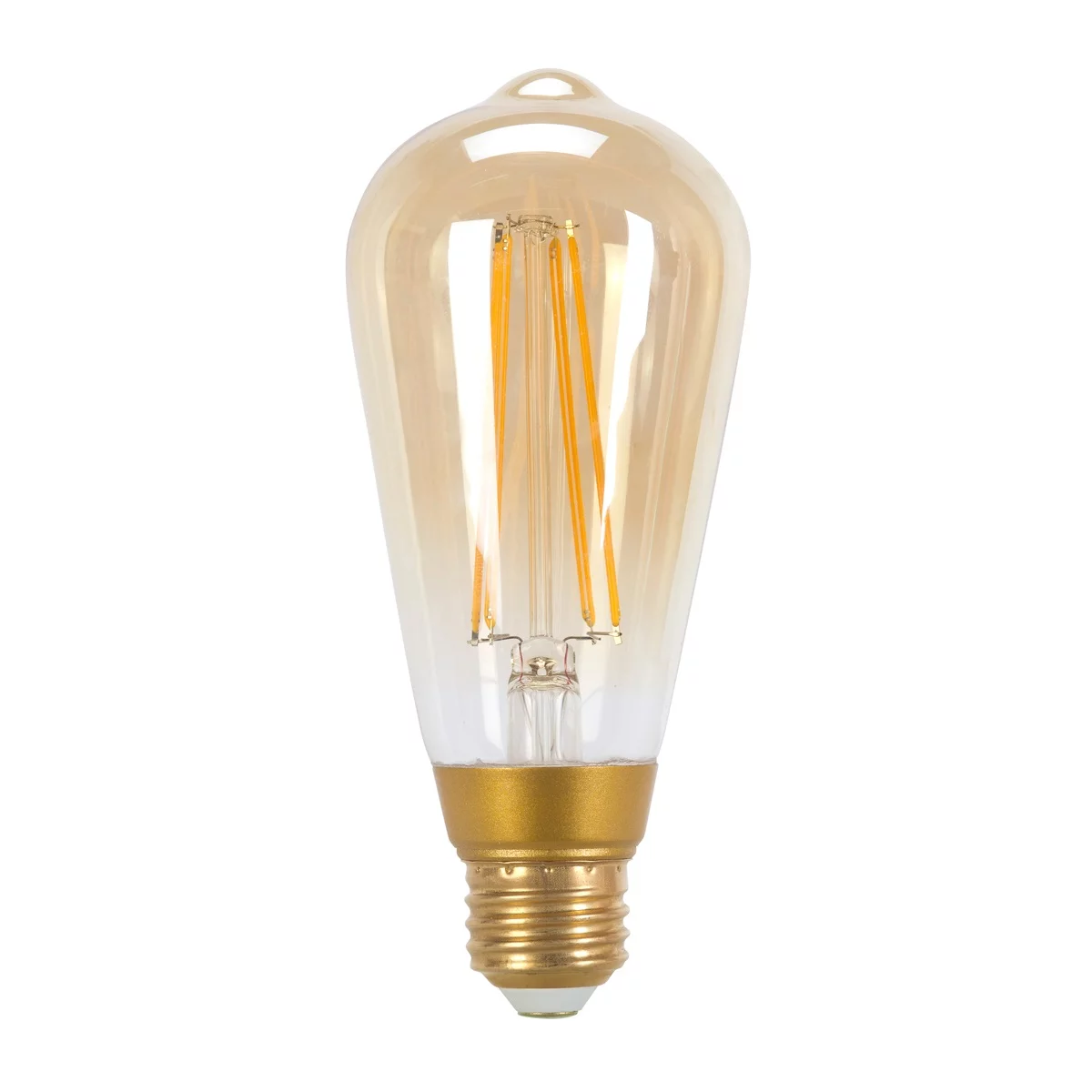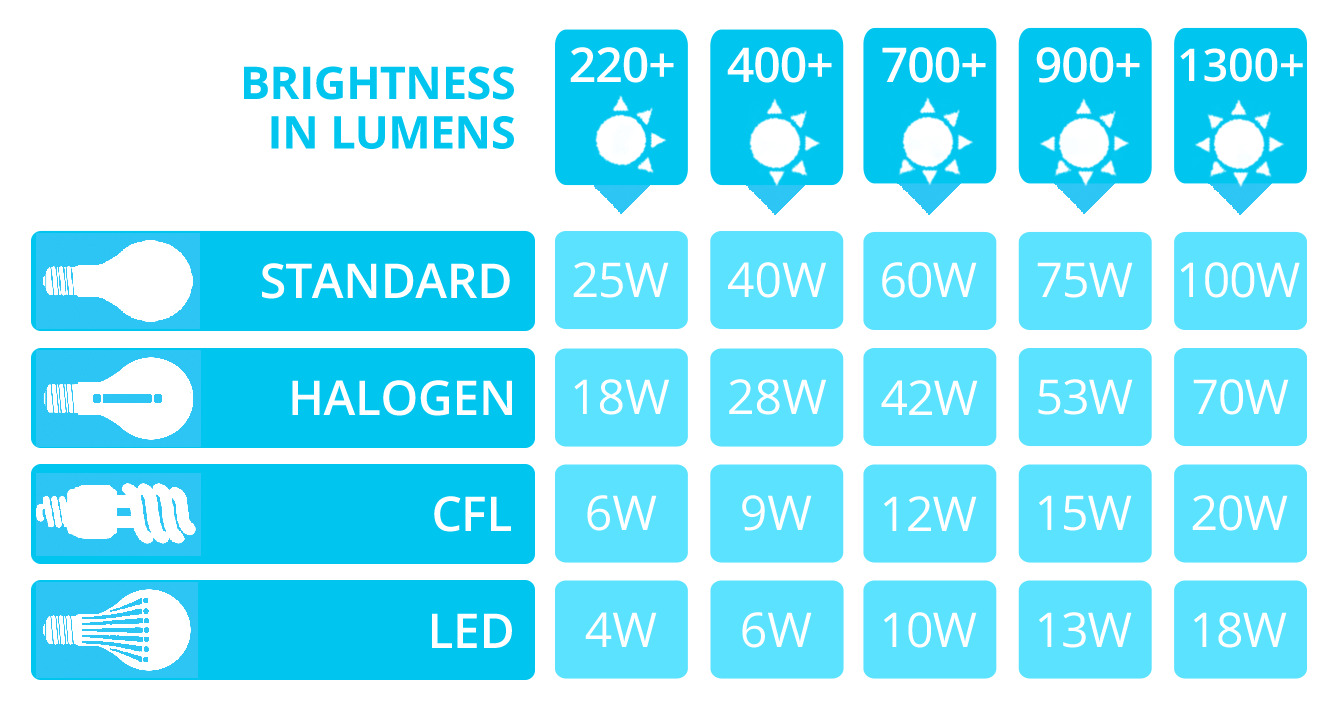

Articles
How Many Lumens Is A 200-Watt LED Bulb
Modified: August 21, 2024
Discover the brightness of a 200 watt LED bulb in lumens with our informative article. Learn more about LED bulbs and their illumination power.
(Many of the links in this article redirect to a specific reviewed product. Your purchase of these products through affiliate links helps to generate commission for Storables.com, at no extra cost. Learn more)
Introduction
Welcome to the world of LED lighting, where energy efficiency meets illumination. LED bulbs have revolutionized the way we light our homes and businesses, offering a more sustainable and cost-effective alternative to traditional incandescent bulbs. One of the key factors to consider when choosing an LED bulb is the amount of light it produces, which is measured in lumens.
In this article, we’ll explore the concept of lumens and how they relate to the wattage of LED bulbs. Specifically, we’ll delve into the question of how many lumens a 200-watt LED bulb produces. So, if you’re curious to learn more about lumens and find out if a 200-watt LED bulb is suitable for your lighting needs, read on!
Key Takeaways:
- LED bulbs offer higher lumens per watt efficiency compared to traditional incandescent bulbs, making them a cost-effective and energy-efficient lighting solution.
- When choosing a bulb based on lumens, consider factors such as room size, color temperature, and energy efficiency to ensure the right level of brightness for your space.
What are Lumens?
Lumens are a unit of measurement used to quantify the amount of light emitted by a light source. In simple terms, lumens indicate the brightness of a bulb. The higher the number of lumens, the brighter the light.
Unlike watts, which measure the amount of power consumed by a bulb, lumens measure the actual output of light. In the past, people would often rely on wattage as a gauge of brightness, assuming that a higher wattage bulb would provide more light. However, with the advent of energy-efficient LED technology, the correlation between watts and brightness has become less relevant.
When comparing different types of bulbs, such as incandescent, fluorescent, and LED, it is important to consider lumens rather than wattage. Lumens provide a standardized measurement that allows consumers to make informed choices based on their desired level of brightness.
To give you an idea of lumens in practical terms, a typical 60-watt incandescent bulb produces around 800 lumens, while a 100-watt incandescent bulb produces around 1600 lumens. LED bulbs, on the other hand, can produce the same amount of light as incandescent bulbs while consuming significantly fewer watts.
Understanding Watts and Lumens
Before we delve into the specifics of lumens and a 200-watt LED bulb, it’s important to have a basic understanding of watts and how they relate to lumens.
Watts, in the context of lighting, measure the amount of energy consumed by a bulb. In traditional incandescent bulbs, the wattage directly correlates to the brightness of the bulb. The higher the wattage, the brighter the light. However, with the rise of energy-efficient lighting solutions like LEDs, the relationship between wattage and brightness is no longer linear.
LED bulbs are capable of producing the same level of brightness as incandescent bulbs while consuming significantly fewer watts. This is due to the fact that LEDs are much more efficient at converting energy into light. In other words, LED bulbs can provide the same amount of lumens as incandescent bulbs but with much lower wattage.
For example, a 60-watt incandescent bulb produces around 800 lumens of light, while an equivalent LED bulb may only consume around 9 watts to produce the same amount of lumens. This stark difference in energy consumption is what makes LED bulbs highly energy-efficient and cost-effective in the long run.
So, when choosing a bulb based on brightness, it’s essential to focus on lumens rather than wattage. By selecting the right number of lumens for your desired lighting situation, you can ensure you have the appropriate level of brightness without wasting energy.
Now that we have a grasp of the basics, let’s explore the specific question of how many lumens a 200-watt LED bulb produces.
Lumens to Watts Conversion
When it comes to understanding how many lumens a 200-watt LED bulb produces, it’s important to recognize that the relationship between lumens and watts is not constant. However, we can use a general guideline to estimate the lumens produced by different wattage bulbs.
As a rule of thumb, an incandescent bulb produces around 14-17 lumens per watt. This means that a 100-watt incandescent bulb would produce approximately 1400-1700 lumens of light.
With LED bulbs, the lumens per watt ratio is significantly higher. On average, LED bulbs can produce around 80-100 lumens per watt. This means that a 100-watt LED bulb would produce approximately 8000-10,000 lumens.
Based on this conversion factor, a 200-watt LED bulb would produce an estimated 16,000-20,000 lumens of light. However, it’s important to note that the specific lumens output can vary depending on the brand, model, and design of the LED bulb.
LED technology has advanced rapidly in recent years, with some bulbs achieving even higher lumens per watt efficiency. It is always recommended to check the product specifications and manufacturer’s information to determine the exact lumen output of a specific LED bulb.
Additionally, it’s worth mentioning that the brightness requirements for different applications can vary. While 16,000-20,000 lumens may be suitable for large commercial spaces or outdoor lighting, it may be excessively bright for residential or small-scale applications.
By understanding the lumens to watts conversion ratio, you can make an informed decision when selecting an LED bulb that aligns with your desired brightness requirements.
Now that we have a general understanding of lumens and the conversion from watts, let’s explore the features of a typical 200-watt LED bulb.
A 200 watt LED bulb typically produces around 20,000 to 25,000 lumens. Be sure to check the specific product specifications for the exact lumen output.
Features of a 200-watt LED Bulb
A 200-watt LED bulb offers several unique features that make it a valuable lighting solution in various settings. Here are some key features to consider:
- High Brightness: A 200-watt LED bulb is designed to provide a high level of brightness. With an estimated output of 16,000-20,000 lumens, it can illuminate large spaces effectively.
- Energy Efficiency: Even though a 200-watt LED bulb produces a considerable amount of light, it consumes significantly less energy compared to traditional incandescent bulbs. LED technology allows for efficient energy conversion, contributing to lower electricity costs and reduced environmental impact.
- Long Lifespan: LED bulbs are known for their extended lifespan. A 200-watt LED bulb can typically last up to 50,000 hours or more, which is significantly longer than incandescent or fluorescent bulbs. This durability translates to reduced maintenance and replacement costs.
- Durable Construction: LED bulbs are designed to withstand various environmental conditions. They are resistant to shocks, vibrations, and temperature fluctuations, making them suitable for both indoor and outdoor applications.
- Instant On/Off: Unlike some other types of bulbs, LED bulbs provide instant illumination when turned on. There is no warm-up time required, ensuring immediate brightness and convenience.
- Color Temperature Options: LED bulbs offer a range of color temperatures to suit different preferences and lighting requirements. From warm white to cool white, you can select the color temperature that creates the desired ambiance in your space.
- Dimmable Options: Many 200-watt LED bulbs come with dimmable features, allowing you to adjust the brightness to fit your needs. This flexibility in lighting control adds versatility to your space.
- Environmental Friendliness: LED bulbs are free of harmful substances such as mercury, which is commonly found in other types of bulbs. Additionally, their energy efficiency contributes to a reduced carbon footprint, making them an environmentally friendly choice.
Considering these features, a 200-watt LED bulb is well-suited for large commercial spaces, outdoor areas, stadiums, warehouses, or any environment that requires ample illumination. However, it’s essential to evaluate your specific lighting needs and ensure that the brightness level provided by a 200-watt LED bulb is appropriate for your intended application.
Now that we’ve explored the features of a 200-watt LED bulb, let’s compare the lumens of different wattage bulbs to gain a better understanding of their brightness levels.
Read more: How Many Lumens In 40-Watt LED Bulb
Comparing Lumens of Different Wattage Bulbs
When it comes to selecting the right bulb for your lighting needs, it’s important to understand the relationship between wattage and lumens. As mentioned earlier, lumens measure the brightness of a bulb, while watts indicate the amount of electrical power consumed by the bulb. Let’s compare the lumens produced by bulbs of different wattages for reference:
- 40-Watt Bulb: A typical 40-watt incandescent bulb produces around 450-500 lumens. In comparison, an equivalent LED bulb may only require around 5-7 watts to produce the same amount of lumens.
- 60-Watt Bulb: An average 60-watt incandescent bulb produces approximately 800 lumens. A similarly bright LED bulb might only need around 9-10 watts to achieve the same lumen output.
- 75-Watt Bulb: A 75-watt incandescent bulb typically produces around 1100 lumens, while an equivalent LED bulb could require just 12-13 watts to reach the same level of brightness.
- 100-Watt Bulb: A standard 100-watt incandescent bulb emits approximately 1600-1700 lumens. Comparatively, an LED bulb with the same level of brightness may only consume around 15-17 watts.
- 150-Watt Bulb: A 150-watt incandescent bulb generally produces about 2500 lumens. In contrast, a 150-watt equivalent LED bulb could consume around 23-25 watts to generate a similar amount of brightness.
- 200-Watt Bulb: As mentioned earlier, a 200-watt LED bulb can produce an estimated 16,000-20,000 lumens. This level of brightness is ideal for large spaces or outdoor applications that require substantial illumination.
By comparing the lumens produced by bulbs of different wattages, you can get a clearer understanding of their brightness capabilities. Keep in mind that LED technology allows for more efficient light output, meaning LED bulbs can produce the same or even greater brightness while consuming significantly fewer watts. This efficiency makes LED bulbs an excellent choice for energy-conscious individuals and businesses.
Next, let’s explore some important factors to consider when choosing a bulb based on lumens.
Factors to Consider When Choosing a Bulb Based on Lumens
When selecting a bulb based on lumens, there are several important factors to consider. These factors will help ensure that you choose the right bulb to meet your specific lighting needs. Here are some key considerations:
- Task or Ambient Lighting: Determine the purpose of the lighting. Are you looking for a bulb to provide general ambient lighting or to enhance task-specific activities? This will help you determine the level of brightness required.
- Room Size and Ceiling Height: Consider the size of the room and the height of the ceiling. Larger spaces and higher ceilings may require bulbs with higher lumen outputs to adequately illuminate the area.
- Color Temperature: Decide on the desired color temperature of the light. Color temperature is measured in Kelvin and can range from warm white (2700K-3000K) to cool white (5000K-6500K). The color temperature affects the ambiance and mood of a space.
- Dimming Capability: If you require the flexibility to adjust the brightness level, ensure that the bulb is dimmable. Not all LED bulbs have this feature, so check the product specifications.
- Energy Efficiency: Consider the energy efficiency of the bulb. LED bulbs are known for their energy-saving properties, as they consume fewer watts while producing the same or greater lumens as traditional bulbs. Look for bulbs with high lumens per watt (lm/W) efficiency ratios.
- Lifespan: Evaluate the lifespan of the bulb. LED bulbs typically have longer lifespans compared to other types of bulbs. A longer lifespan means less frequent bulb replacements, saving you both time and money in the long run.
- Manufacturer and Brand Reputation: Research the reputation of the manufacturer or brand. Opt for reliable and reputable brands known for producing high-quality, durable LED bulbs that provide accurate and consistent lumen outputs.
- Compatibility: Check if the bulb is compatible with your existing lighting fixtures. Some bulbs may have specific size or base type requirements, so ensure that the bulb is suitable for your fixtures.
By considering these factors, you can choose a bulb that not only provides the desired brightness but also meets your specific needs in terms of efficiency, lifespan, color temperature, and compatibility.
Now that we’ve explored the factors to consider, let’s summarize our findings.
Conclusion
Choosing the right bulb based on lumens is crucial for achieving the desired level of brightness in any space. In this article, we’ve explored the concept of lumens and how they relate to wattage in LED bulbs. While watts measure the energy consumed by a bulb, lumens indicate the actual brightness produced.
When considering a 200-watt LED bulb, it’s important to note that LED technology allows for higher lumens per watt efficiency compared to traditional incandescent bulbs. While a 200-watt LED bulb may produce an estimated 16,000-20,000 lumens, it’s essential to assess whether this level of brightness is suitable for your specific lighting needs and space.
Throughout the article, we’ve discussed various factors to consider when choosing a bulb based on lumens, such as room size, color temperature, energy efficiency, and compatibility. By understanding and evaluating these factors, you can make an informed decision that aligns with your lighting requirements and preferences.
LED bulbs offer several advantages, including energy efficiency, long lifespan, durability, and instant on/off capabilities. They are revolutionizing the lighting industry with their ability to provide substantial brightness while consuming fewer watts. Additionally, LED bulbs are environmentally friendly, free from harmful substances like mercury, and contribute to lower energy costs.
Ultimately, whether you’re considering a 200-watt LED bulb or any other wattage, it’s important to focus on lumens as a primary indicator of brightness. By doing so, you can select the right bulb that offers the desired level of illumination without wasting energy.
As technology continues to advance, the future of LED lighting looks even brighter. With constant innovations and improvements, LED bulbs will continue to provide efficient and environmentally friendly lighting solutions for years to come.
So, whether you’re looking to illuminate your home, workplace, or outdoor areas, consider the lumens, features, and factors discussed in this article to make an informed decision and enjoy the benefits of LED lighting.
Frequently Asked Questions about How Many Lumens Is A 200-Watt LED Bulb
Was this page helpful?
At Storables.com, we guarantee accurate and reliable information. Our content, validated by Expert Board Contributors, is crafted following stringent Editorial Policies. We're committed to providing you with well-researched, expert-backed insights for all your informational needs.















0 thoughts on “How Many Lumens Is A 200-Watt LED Bulb”